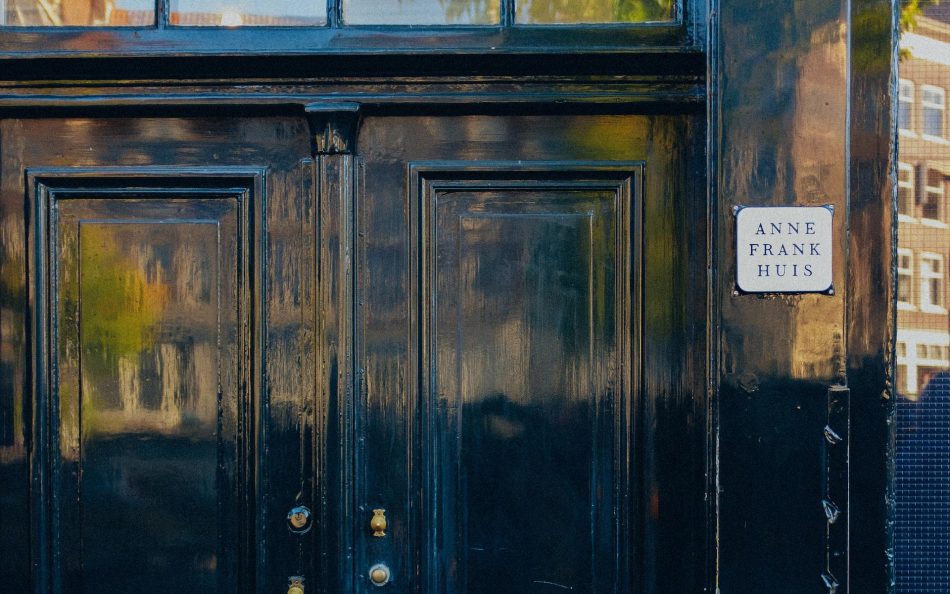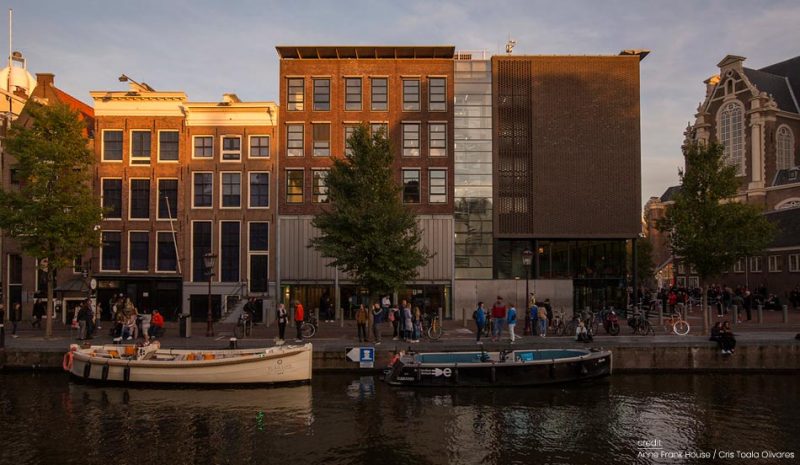A German-born Jew, Anne Frank lived with her family in Amsterdam, Netherlands, during World War II. During the Holocaust, the Nazis took up the mission to exterminate the Jews as they treated them inferior and perceived them to be a dangerous race fit to be eliminated. Consequently, they subjected the Jews to unimaginable and inhuman torture causing them intense physical and mental suffering. Even the women and the children were not spared. They stripped the Jews of their citizenship and denied them even basic rights.
They persecuted and eventually exterminated the Jews by deporting them to horrific gas chambers and concentration camps, committing mass murders. Without food, water, and basic hygienic conditions and sanitation, many died within a few days inside these chambers/camps. Those surviving were forced into extreme physical labor that broke their spirit and strength.
Anne was born on June 12th, 1929, and was barely 16 when she died of typhus, along with her sister, Margot, inside one of these concentration camps in 1945. She routinely wrote her diary, documenting the savage and ruthless military tactics of the Nazis. She described their lives in hiding during the war. Her diary was recovered after her death and was published posthumously in 1947, giving her worldwide fame.
“The Diary of Anne Frank” provides a firsthand account of the daily lives of the Jews in hiding. It also reflects the young teenager’s personal thoughts, dreams, and aspirations (as they remained stifled and forcefully extinguished prematurely). Little did she foresee that the posterity will remember her through her poignant writings and she would be immortalized for life, living forever in the annals of history as a blooming writer whose wings got clipped brutally much ahead of her time.
“The Diary of Anne Frank” has been translated into more than 70 languages and has been adapted into plays, movies, and tele-series. It is the curiosity that drives hundreds of visitors to the house of this iconic personality, one of the youngest to be remembered in history. Anne’s story has had a profound impact on people around the world.
Highlights of Anne Frank House

Anne Frank’s house in Amsterdam is open to visitors around the year and allows them the opportunity to take a peek into the Frank family’s possessions that have been preserved intact for over 75 years. The house is a museum of many original furnishings and artifacts. Much of the credit for preserving her memories goes to Anne Frank’s father, a humanitarian, who miraculously survived the Holocaust.
The following are some important and historic features of her house —
The Secret Annex: The Secret Annex lies in the center of Amsterdam and is of much historical value because this was where Anne had written her famous memoir during those painful years in hiding. She and her family shared this secret, but extremely small and compact, apartment with 7 others for over two years to hide from the cruel Nazis. It is now open to visitors who can tour the rooms where the Franks and other residents of the Annex lived, worked, and slept during their time in hiding. Anne used codes in her diary instead of real names. She called her hideout ‘The Secret Annex.’
The Bookcase: The entrance to the now famous Secret Annex was hidden behind a bookcase that could be opened by pulling on a cord. The bookcase is still in its place and is an object of great interest to the visitors. It is a mystery to this day about the identity of the person who betrayed the trust of the Franks and ratted them out to the Nazis. They were all arrested in August of 1944.
Anne’s Room: Anne’s bedroom is a small attic room that she later had to share with an elderly resident. She had plastered the walls of this attic room with posters and pictures which are still kept intact. Visitors can see them all, along with excerpts from her diary in which she recorded experiences, emotions, thoughts, and feelings so typical of an adolescent girl like her. The contents of her diary are also a reflection of the precocious writer that could have been.
The Original Documents: At the time of their arrest, Anne was forced to abandon her most valuable possession — her diary. This was later recovered by a person who remained loyal to the Frank family until her death. She had handed over Anne’s diary to her father when he revisited the Secret Annex to claim their memories and things. Letters, photographs, documents, and artifacts from the war period remain intact at the museum today.
The Exhibition: The museum has a permanent exhibition that tells the story of Anne Frank and her family, as well as the wider context of the Holocaust, and the persecution of the Jews during World War II.
Anne’s house is a museum of great interest to visitors today. Tourists can listen to audio guides, and learn about and look at some of the things that originally belonged to the Franks. These have been protected and conserved for over 75 years now. The walls of the museum are decorated with life-like portraits of Anne Frank in her different pensive moods, along with other members of her family and residents of the Secret Annex.
Inside the museum, they also show you a documentary on Anne’s times; contents from her diary; Anne’s father (Otto Frank) who was a source of inspiration, love, and encouragement for the teenager; about the Holocaust; and the difficult times that finally tore the Franks apart. It also showcases the only surviving video of the little child who was captured overlooking her balcony trying to take a glimpse of the wedding of a neighbor.
Each picture adorning the wall of the house has a descriptive story beneath it to enlighten the visitors. In one corner of the wall, they also have the ‘yellow star’ encased within a glass box which all Jews (children aged 6 years and above) were forced to wear for identity.
Otto Frank’s (Anne’s father) associates and employees risked their lives for two years to smuggle food and other necessities to this house until they were discovered and arrested in 1944. The Museum also contains their pictures and shares their stories of gallantry.
A word of caution though, the museum is not accessible to people with mobility issues as you need to climb a flight of narrow steps to access the rooms inside the premises.
What You Should Know of Timings and Tickets

The museum is open to the public every day of the week except for some public holidays. April 1st to November 1st is counted as the peak season when the museum remains open between 9 am to 10 pm. During off-peak season (November 2nd — March 31st), it remains open from 9 am to 7 pm. The last admission is 30 minutes before closing.
As for ticket prices, it will be 12.50 Euros for adults; children aged between 10 to 17 years will have a fee of 6.50 euros. Free admission is offered for those children under 10 years.
Ticket prices are subject to revisions so you are best advised to check the latest updates on the Anne Frank House website. Also, tickets sell out fast during the peak season, so you must book tickets well in advance to avoid inconvenience.
Address, Phone and How to Reach
Anne Frank’s house is a famous address today in Amsterdam. The address is – Westermarkt 20, 1016 GV Amsterdam, Netherlands. For queries or help, you can call 31 20 556 71 05 or write to services@annefrank.nl.
Given the worldwide fame of its owner, the house is not too difficult to locate in Amsterdam. Anne Frank’s hiding place is the best-known building in Amsterdam. The museum with a story attracts more than a million visitors every year.
You can take public transportation or walk, depending on where you are starting from.You can take a tram to the Westermarkt Stop. Tram lines 13, 14, and 17 stop at this location. From the Westermarkt stop, Anne Frank’s House is a 5-10 minute walk. Anne Frank’s House is located in the Jordaan district of Amsterdam. It is easily accessible on foot from many parts of the city.

